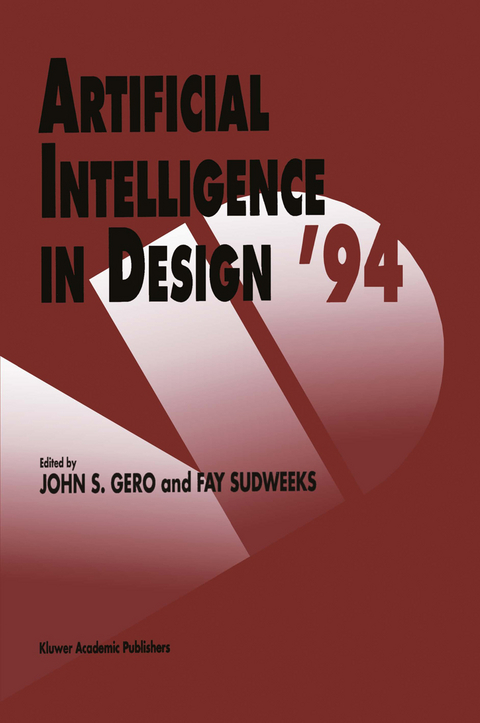
Artificial Intelligence in Design ’94
Springer (Verlag)
978-94-010-4400-4 (ISBN)
The papers in this volume are from the Third International Conference on Artificial Intelligence in Design held in August 1994 in Lausanne, Switzerland. They represent the cutting edge of research and development in this field. They are of particular interest to researchers, developers and users of computer systems in design. This volume demonstrates both the breadth and depth of artificial intelligence in design and points the way forward for our understanding of design as a process and for the development of computer-based tools to aid designers.
1 Conceptual design.- The role of computational prototypes in conceptual models for engineering design.- A two-step approach to conceptual design of mechanical devices.- Supporting creative mechanical design.- Innovation in analogical design: A model-based approach.- 2 Case-based design—1.- Formalizing case adaptation in a case-based design system.- A.S.A. An interactive assistant to architectural design.- The design of a tool kit for case-based design aids.- 3 Case-based design—2.- Using diagrams to access a case base of architectural designs.- Case based design in architecture.- Flexible retrieval strategies for case-based design.- 4 Configuration design.- Generating non-brittle configuration-design tools.- Configuration as model construction: The constructive problem solving approach.- An association model for a CAD system.- 5 Design by generation.- Constraint unification grammars: Specifying languages of parametric designs.- A knowledge-based systems approach to the layout design of large made-to-order products.- Multiple design: An extension of routine design for generating multiple design alternatives.- 6 Theoretical reasoning in design.- Inferential design theory: A conceptual outline.- Integration of aspects in design processes.- Evidential reasoning based hierarchical analysis for design selection of ship retro-fit options.- 7 Designing with constraints.- Constraint based technology mapping in logic design.- An axiomatic approach that supports negotiated resolution of design conflicts in concurrent engineering.- Genetic algorithms versus simulated annealing: Satisfaction of large sets of algebraic mechanical design constraints.- 8 Shapes and objects in design.- Encoding explicit and implicit emergent subshapes based on empirical findings about human vision.- Object emergence in 3D using a data-driven approach.- Gestalts in CAD-plans: Analysis of a similarity concept.- 9 Cognitive aspects of design.- Perspective-based critiquing: Helping designers cope withconflicts among design intentions.- Visual critiquing in domain oriented design environments: Showing the right thing at the right place.- Design fixation and intelligent design aids.- 10 Models of design.- Problem-oriented and task-oriented models of design in the CommonKADS framework.- Integrating standards and synthesis knowledge using the YMIR ontology.- On formal specification of design tasks.- 11 Integrated design.- Specifying multiple representations of design objects in SORAC.- Interpretation objects for multi-disciplinary design.- Integrated computer support for interdisciplinary system design.- 12 Access and retrieval in design.- Design space navigation as a collaborative aid.- Retrieval of similar layouts—about a very hybrid approach in FABEL.- Intelligent engineering component catalogs.- 13 Design processes.- Generating design decomposition knowledge for parametric design problems.- Design analysis based on fuzzy reasoning.- An approach to design support using fuzzy modelsof architectural objects: The case of luminous ambience in daylighting and sunlighting.- 14 Engineering in design.- Design-for-Assembly (DFA) by reverse engineering.- Representing design history.- Bridging the gap between AI technology and design requirements.- Author index.- First author electronic addresses.
| Zusatzinfo | XI, 770 p. |
|---|---|
| Verlagsort | Dordrecht |
| Sprache | englisch |
| Maße | 160 x 240 mm |
| Themenwelt | Informatik ► Theorie / Studium ► Künstliche Intelligenz / Robotik |
| Informatik ► Weitere Themen ► CAD-Programme | |
| ISBN-10 | 94-010-4400-7 / 9401044007 |
| ISBN-13 | 978-94-010-4400-4 / 9789401044004 |
| Zustand | Neuware |
| Haben Sie eine Frage zum Produkt? |
aus dem Bereich


